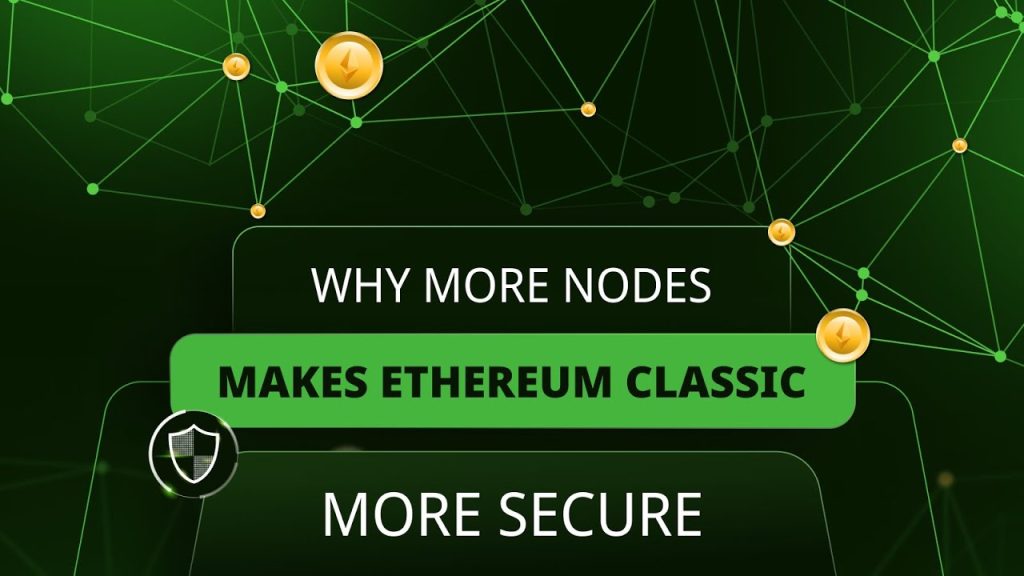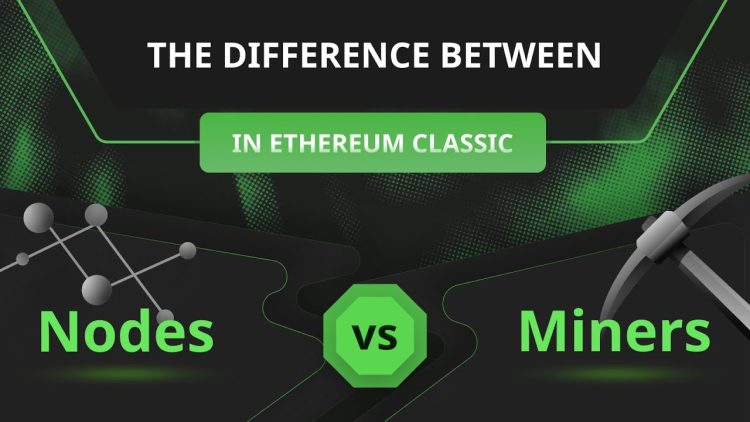Introduction
The concept of nodes and miners is central to understanding how blockchain technology operates. In any blockchain network, nodes are the foundational components that ensure the distributed nature of the system. Meanwhile, miners are specific types of nodes that play a crucial role in validating and adding new blocks to the blockchain. The relationship between these two entities is complex but vital to the functionality, security, and decentralization of blockchain networks.
This article aims to clarify what nodes and miners are, their respective roles in a blockchain, and how they interact with each other to maintain the integrity and security of the system. Additionally, we will explore the difference between these two concepts in various types of blockchain networks, including Proof of Work (PoW), Proof of Stake (PoS), and others.
Section 1: What is a Blockchain Node?
- Definition of a Node:
In the context of blockchain technology, a node refers to any active participant in the network that holds a copy of the blockchain’s ledger. A node can be any device (such as a computer, server, or mobile device) that is connected to the blockchain network. Nodes are responsible for validating transactions, maintaining the integrity of the blockchain, and relaying data across the network. - Types of Nodes:
There are several types of nodes, each with specific functions:- Full Node:
A full node stores a complete copy of the blockchain’s history and participates in the validation and propagation of transactions. Full nodes enforce the network’s rules and ensure that all transactions are legitimate by checking them against the blockchain’s protocol. - Light Node (or Lightweight Node):
A light node, also known as a SPV (Simple Payment Verification) node, only stores a subset of the blockchain data, specifically the headers of blocks. Light nodes rely on full nodes to verify transactions, making them less resource-intensive but still able to participate in the network in a limited capacity. - Archival Node:
Archival nodes store the entire history of the blockchain and any associated data, including old transactions and blocks. They are critical for providing the data necessary for applications or users who need historical blockchain data. - Mining Node (in PoW-based Networks):
A mining node, or miner, is a type of full node that participates in the process of mining by verifying transactions and competing to create new blocks. Mining nodes are discussed in more detail in the next section.
- Full Node:
- Role of Nodes in Blockchain Security:
Nodes in a blockchain network maintain the distributed ledger, ensuring that each transaction is verified and recorded according to the consensus rules. Since nodes keep copies of the blockchain and continually update themselves with the latest blocks, they play a critical role in ensuring transparency, immutability, and trust in the network.
Section 2: What is a Blockchain Miner?
- Definition of a Miner:
A miner is a specific type of node that performs the task of validating and adding new blocks to the blockchain. Miners work by solving complex cryptographic puzzles, which require significant computational resources. In Proof of Work (PoW)-based blockchains like Bitcoin, miners compete to solve these puzzles, and the first miner to solve it gets the right to add the next block to the chain and receive a reward (usually in the form of cryptocurrency). - Role of Miners in Transaction Validation:
Miners play an essential role in the validation of transactions. When a user initiates a transaction (e.g., sending cryptocurrency), it is broadcasted to the network. Miners collect these transactions into blocks, solve cryptographic puzzles (in PoW), and ensure the transactions within a block are legitimate according to the consensus rules. - Mining Process in PoW:
The mining process involves miners trying to find a nonce (a random number) that, when combined with the block’s data, produces a hash that meets certain criteria. This requires substantial computational work, and miners use specialized hardware, such as ASICs (Application-Specific Integrated Circuits) or GPUs (Graphics Processing Units), to perform this work efficiently. When a miner successfully solves the puzzle, they announce it to the network, and the new block is added to the blockchain.- Proof of Work: In PoW, miners expend computational power to solve puzzles and confirm transactions. This process makes the blockchain secure and resistant to attacks, such as double-spending, by ensuring that altering the blockchain would require redoing all the work associated with previous blocks, which is computationally infeasible.
- Mining Rewards:
In return for their work in validating transactions and securing the blockchain, miners are rewarded with block rewards (newly minted cryptocurrency) and transaction fees from users who want their transactions included in the block. This incentivizes miners to keep participating in the network and ensures that the blockchain continues to grow.
Section 3: The Relationship Between Nodes and Miners
- Miners Are Nodes, But Not All Nodes Are Miners:
While all miners are nodes, not all nodes are miners. Miners are specialized nodes that participate in the validation and creation of new blocks. On the other hand, full nodes and light nodes play different roles in maintaining the network but do not actively participate in the mining process. Full nodes verify transactions, store the complete blockchain, and enforce consensus rules, but they do not compete to add new blocks to the blockchain. - Miners and Consensus Mechanisms:
The relationship between miners and consensus mechanisms is essential for maintaining blockchain security. In PoW-based systems, miners use their computational power to reach consensus about the state of the blockchain, ensuring that only legitimate transactions are added to the ledger. This decentralized consensus prevents fraud and ensures that all participants in the network are operating under the same rules. - Mining Nodes Communicate with Other Nodes:
Mining nodes are interconnected with full nodes to maintain synchronization with the blockchain. After a miner successfully mines a block, they broadcast it to the network so that other nodes can verify and add it to their copy of the blockchain. This ensures that all nodes have the same version of the blockchain, and transaction data remains consistent across the entire network. - Role in Decentralization:
The interaction between nodes and miners is a key component of blockchain’s decentralized nature. Since no central authority controls the network, it relies on the collaboration of thousands (or even millions) of independent nodes and miners to reach consensus. This decentralization increases the security and resilience of the network, as there is no single point of failure.
Section 4: Differences Between Miners in PoW and Other Consensus Mechanisms
While the relationship between nodes and miners in Proof of Work (PoW) systems is well-understood, it’s important to recognize that other consensus mechanisms, such as Proof of Stake (PoS), Delegated Proof of Stake (DPoS), and Practical Byzantine Fault Tolerance (PBFT), handle the role of “miners” differently.
1. Proof of Stake (PoS):
- No Mining, Staking Instead:
In PoS, validators replace miners. Rather than expending computational power, participants “stake” a certain amount of cryptocurrency to gain the right to validate transactions and create new blocks. Validators are selected based on the size of their stake and other factors, such as age of the stake. - Validation Instead of Mining:
Validators, instead of miners, propose new blocks, and the network reaches consensus based on the agreement of a majority of validators. PoS reduces energy consumption and introduces new economic incentives.
2. Delegated Proof of Stake (DPoS):
- Delegates Perform Validation:
In DPoS, token holders vote for a small set of trusted delegates who are responsible for validating transactions and maintaining the blockchain. This leads to faster transaction processing times and a more efficient system, though it may reduce decentralization. - No Mining Involved:
There is no mining in the traditional sense. The selected delegates handle the validation and block creation, with their performance being tracked and periodically re-evaluated.
3. Practical Byzantine Fault Tolerance (PBFT):
- Nodes are Both Validators and Miners:
In PBFT-based systems, all participating nodes can be responsible for both validating and agreeing on transactions. PBFT doesn’t rely on mining in the traditional sense but instead uses a voting process to agree on the state of the blockchain. - Fault-Tolerance Over Mining:
The consensus mechanism is designed to tolerate faulty or malicious nodes while still achieving agreement. Since the focus is on Byzantine fault-tolerance, the need for mining as a proof of effort is replaced by the collective agreement of a majority of nodes.

Section 5: The Future of Nodes and Miners in Blockchain
As blockchain technology continues to evolve, the role of nodes and miners will likely change, especially with the growing adoption of alternative consensus mechanisms like Proof of Stake. While mining will remain a central feature of PoW-based blockchains, PoS and other mechanisms are gaining prominence due to their energy efficiency and scalability.
- Energy Efficiency: PoS and other consensus mechanisms have the potential to reduce the energy consumption associated with mining, which has been a significant concern with PoW systems like Bitcoin.
- Scalability and Speed: Consensus mechanisms like DPoS and PBFT offer faster transaction times and greater scalability, which is crucial for blockchain adoption in enterprise-level applications.
- Decentralization vs. Efficiency: A major ongoing debate is how to balance decentralization (which is core to blockchain philosophy) with the need for more efficient and scalable networks. New hybrid consensus models are being proposed to address these concerns.
Conclusion
The relationship between nodes and miners is fundamental to the operation of blockchain networks. Nodes provide the infrastructure and ensure the integrity of the distributed ledger, while miners (specific types of nodes) validate transactions and add new blocks to the blockchain. By working together, nodes and miners ensure that the blockchain remains secure, transparent, and decentralized.
As blockchain technology evolves and new consensus mechanisms emerge, the role of nodes and miners may change, but their collective function of ensuring trustless and secure transactions will remain at the heart of blockchain’s value proposition. Understanding the interplay between these components is essential for anyone interested in the future of blockchain technology.
















































